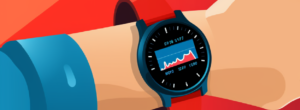HR Distinction Spotlight: How Experian tackled attrition with analytics innovation
- 4 Min Read
Could analytics be the key to tackling talent management? In this weeks HR Distinction Spotlight, HRD Connect looks at Experian’s advanced analytics journey in tackling their retention challenges.
- Author: Louron Pratt
- Date published: Nov 4, 2019
- Categories

Many organisations strive to go through a transformational journey and guarantee global success. To overcome these challenges, businesses must undertake numerous changes over many years. This can heavily impact culture, talent, and strategic focus.
Through these monumental changes, HR plays a key role in maintaining and aligning a consistent experience for their workforce in times of uncertainty. This week, we look at Experian’s HR Innovation journey. The organisation utilised advanced analytics to drive business results.
Experian’s people are one of its most important assets. However, a high attrition rate resulted in the business losing key talent across the organisation. This was significantly costly from a recruitment and business growth perspective. Experian’s workforce methods at the time were manual, and the business felt that it could achieve a better view of its workforce by applying data and technology to its HR strategy.
Experian’s objective was to use technology to reduce attrition. If the company was successful in doing so, it would further utilise technology to create opportunities for other organisations with similar challenges.
Reducing attrition rate would be the main indicator of success. The benchmark set the standard attrition figure at a rate that was 4% lower than Experian’s current rate.
Experian’s strategy was to disrupt the traditional methods of HR practices by transforming masses of people data into meaningful insights. This would enable HR teams to better understand the global workforce at a speed that far surpasses human ability.
“We have a well-established methodology to building analytical insight models in other industries which could equally apply to the HR sector,” said Olly Britnell, Global Head of Workforce Analytics and HR strategy, Experian.
“We were confident that with our expertise and data assets we could create a solution to move the needle on employee retention, create a more fulfilling working culture and save a great deal
of money.”
The gained insight could then be used by HR and management in a variety of ways, such as for productivity, organisational design, performance management, wellbeing, innovation, engagement and remuneration. Through understanding these levers on attrition risk, Experian could not only proactively act on high-risk individuals, but could also weave the insights into their People and HR strategic plans.
If Experian could develop a solution to solve its attrition problem at speed and scale using the wealth of information available, it could also help solve this problem for other organisations.
Finding a solution to this problem was an opportunity Experian could capitalise on.
Experian was in a unique position to utilise its robust and market-leading approach to predictive analytics, as the project aligned with its core capabilities of data, analytics and technology.
Historical data from the past two years was extracted from numerous sources including HR management systems, Payroll, Talent, Learning and Experian data – which helped provide a new lens on its workforce. More than 200 summary characteristics were considered in the modelling process.
20 key attributes were included in the final model. These covered 4 main areas:
- Demographics, e.g. age.
- Team & manager, e.g. team size.
- Individual, e.g. performance rating.
- Proprietary data, e.g. Experian’ ‘Mosaic’ consumer profiling.
A robust model was built that created a risk score associated with an employee regarding their likelihood to leave and the reasons for the score.
Each characteristic had a positive and negative score associated with it, which collectively provided an overall risk of leaving. The categorisation of employee groups and a supporting online visualisation output enabled the user to review the risk profile at an organisational business unit or specific employee level.
The model was first trialled with Experian’s UK&I business, but the same approach was quickly rolled out across all their regions (N. America, EMEA, APAC and Brazil). The models are now used as a core tool for HR teams to inform all talent management processes within the business.
“The Workforce Analytics solution has saved us millions, but most importantly it’s become the backbone of how we make the best decisions for our people,” said Mark Wells, Chief Customer Officer, Experian.
“We’re now better able to anticipate and predict what our workforce value and that’s helped us to retain talent that keeps Experian innovating. Our own success has been the catalyst to make this solution available to other businesses and I’m confident they’ll start to reap the same rewards.”
As per its ambition, Experian successfully started working with other organisations by applying the same approach of their successful results with people data.
By commercialising its solution for other organisations who have the same attrition problem, the company are leading the way in the future of work, with data analytics at its forefront. The potential this has across businesses worldwide is huge for those who choose to adopt it.








